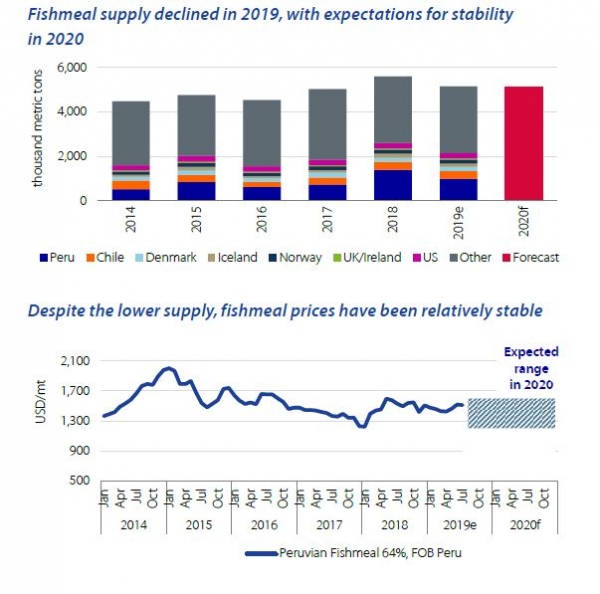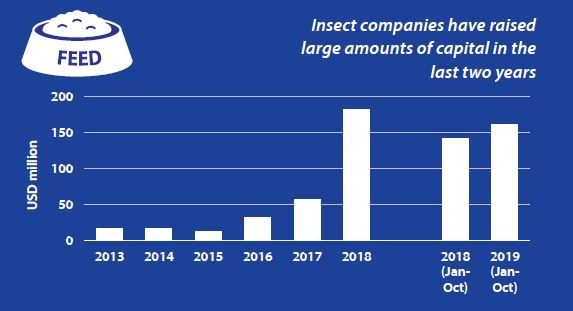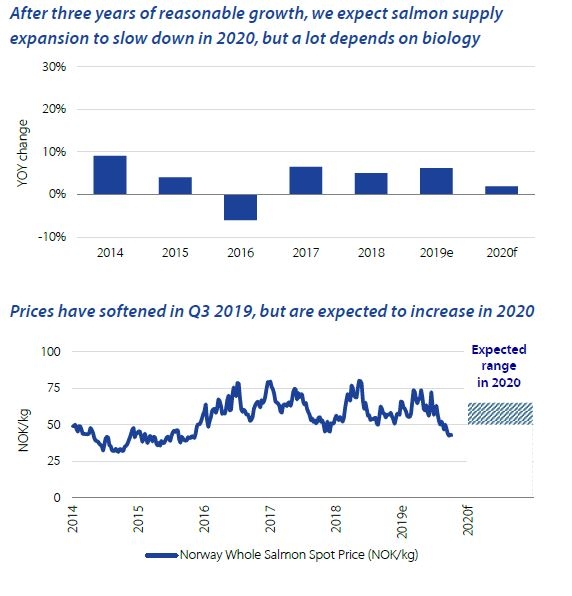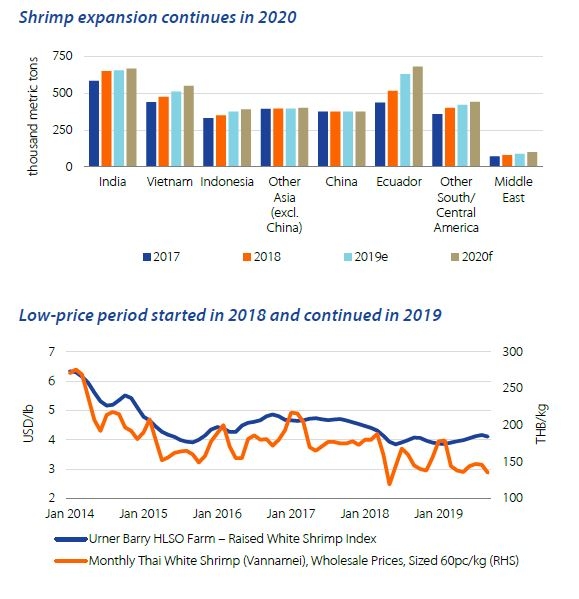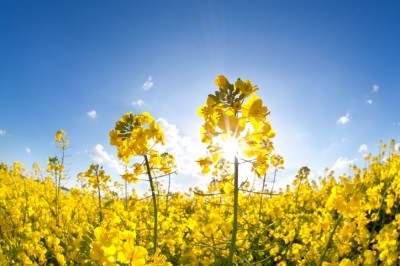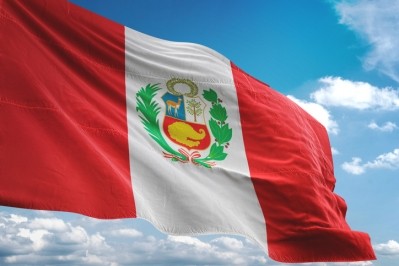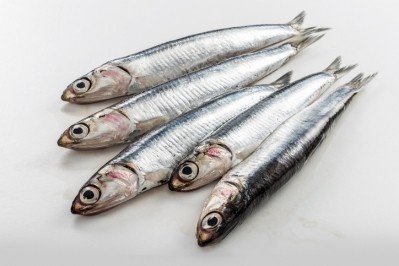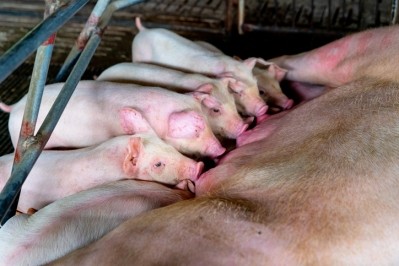Stable fishmeal supply is expected for 2020
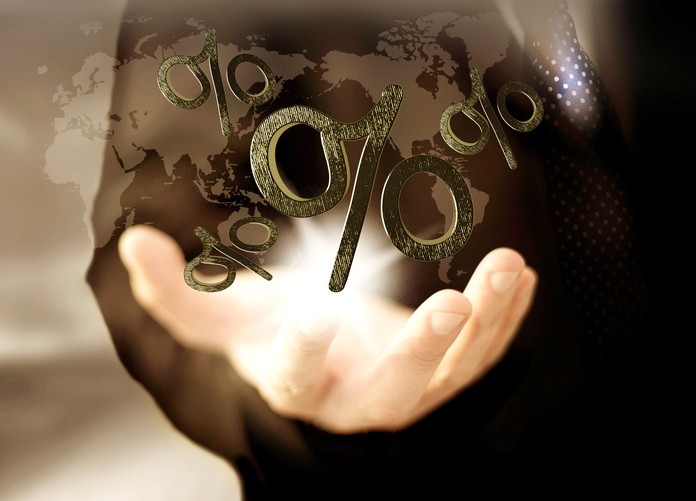
The outbreak of African Swine Fever (ASF) virus has impacted the demand for fishmeal in piglet feed in China, countering the effect of lower supply in 2019. Rabobank, in its annual global animal protein outlook 2020, said it expects a similar pattern for 2020.
“Global fishmeal supply in 2018 was as good as it gets. Due to lower anchovy quotas and a mini-ban in Peru’s first fishing season, fishmeal production is estimated to decline somewhat in 2019. For the second fishing season in 2019, a similar quota - about 2mmt - is expected, which would keep the fishmeal supply situation stable in 2020.
“In the absence of a supply issue in Peru, 2020 prices are likely to remain soft, due to the ongoing weakness in China’s piglet feed demand caused by ASF.”
The bank, therefore, said it predicts that fishmeal prices will fluctuate between US$ 1,200/mt and US$ 1,600/mt in 2020.
Alternative ingredients gaining traction
Alternatives to fishmeal and fish oil as ingredients for aqua feed continued to attract investor, retailer, consumer, and feed formulator interest in 2019, said the aquaculture market specialists. Though the take-up is limited by current production volumes of these novel inputs.
“Alternative proteins as feed ingredients have seen a significant ramp-up in investment, with over US$200m invested in insect companies in the space of the 12 months to October 2019.
“We attribute this momentum to added functionality, engagement of leading feed formulators, and commitments from salmon farmers – much of which reflects rising consumer and retailer interest.”
Aquaculture has been the focus areas for the use of alternative proteins in animal feed, said the analysts. Most investment is flowing into insect and algae production, although total availability remains low, compared with fishmeal and fish oil. “This will start to change in 2020, as the new investments in alternatives’ production start coming online. Bacterials and GM canola are also coming into production.”
Salmon farming
In terms of aquaculture dynamics covered in the outlook, the analysts anticipate lower growth rates in salmon supply globally.
“After three years of reasonable growth, we expect salmon supply expansion to slow down in 2020, but a lot depends on biology.”
Global salmon supply increased slightly more than expected in 2019, resulting in an estimated overall annual growth of 6.2%, found the outlook.
“For 2020, we expect growth to slow down to 1.9%, with limited growth in Norway and especially Chile.”
Salmon prices have softened but are expected to firm in 2020, according to the report.
“After record-high levels in 2018, salmon prices have been under pressure since Q3 2019. This price decrease was a result of high harvest levels in Norway, in a period of cyclical low demand.
“We expect this soft price trend to pass, and our forecast is for salmon prices to range between NOK 50/kg and NOK 65/kg in 2020, with expected tighter supply pushing up prices.”
Novel ways of salmon farming are emerging
Given the large market size and high profitability of salmon, and the supply constraints of sea-based farming, alternative farming techniques – such as land-based aquaculture using
recirculating aquaculture systems (RAS) and off-shore farming – are attracting more investment, noted the review.
“Although the number of proposed projects is increasing day by day, particularly for RAS salmon, we don’t expect to see significant volumes contributing to salmon supply from these alternative techniques in 2020. Large salmon-farming companies are also increasingly using applications of post-smolt systems. We already see gradual improvements in biology due to application of post-smolt systems.”
Shrimp supply growth potential remains
The outlook sees 2019 shrimp production coming in slightly higher than 2018 volumes, primarily driven by Ecuador, but the analysts noted that Vietnam and Indonesia have also been recording growth in shrimp output this year.
The drivers are different in each region, but intensification is the main theme. Ecuador is gradually increasing the density of its farming operations – and due to this, a record growth rate of 20% to 25% is expected in 2019.
India, the largest producer, was the main exporter to contract in supply in the first half of 2019 – a result of low prices, combined with white feces disease and weather issues, said Rabobank. However, the report sees recovery in the second half of 2019, and expects the year to end with the possibility of marginal growth for the Indian shrimp industry.
“We expect this to set the scene for further supply expansion in 2020.”
However, if prices do not recover from H2 2019 levels, at least in Asia, growth may not materialize, warned the bank.
